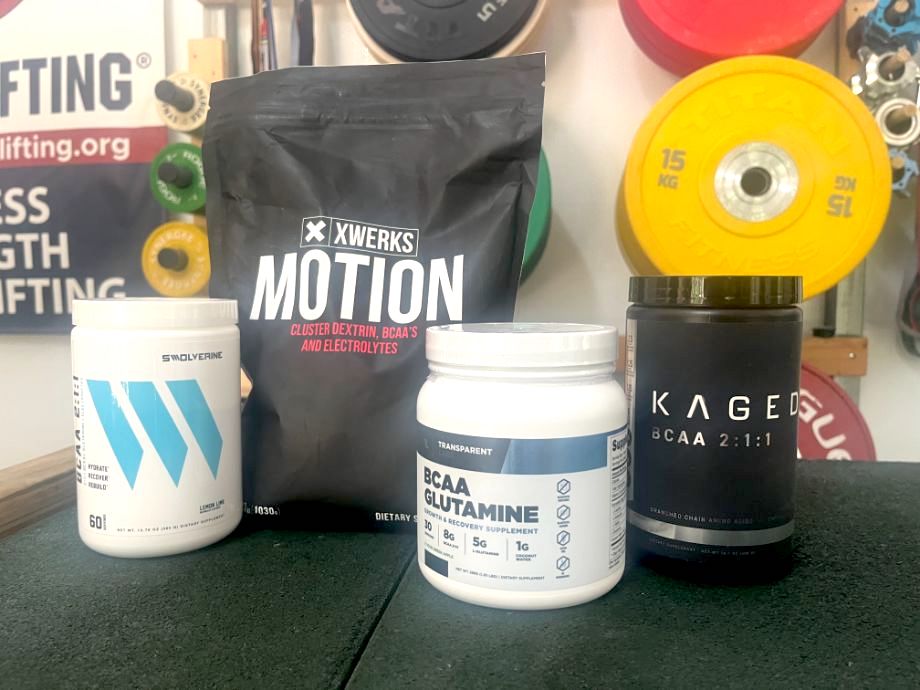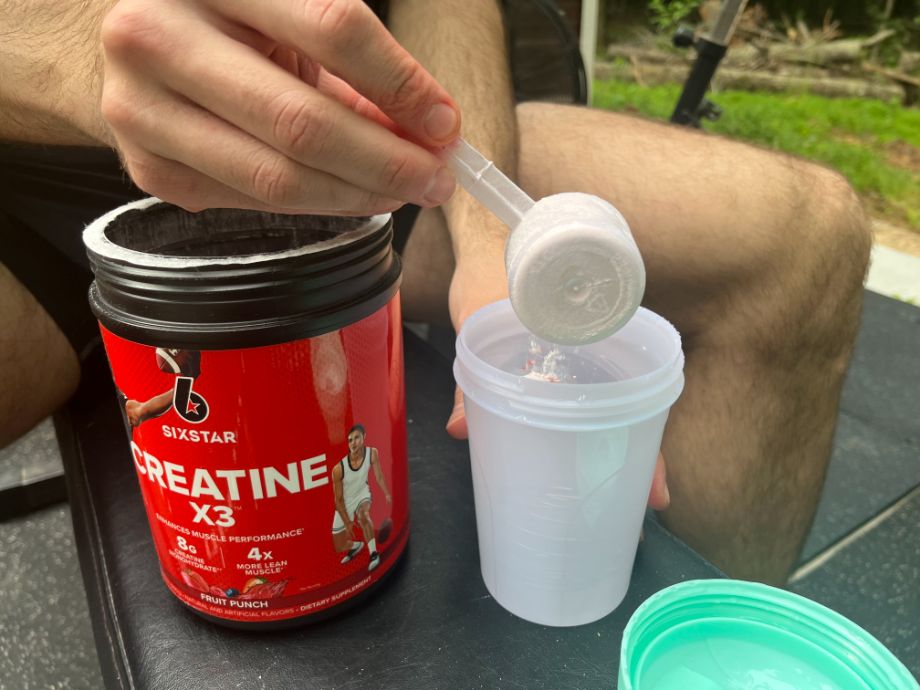Peek into a fitness buff’s supplement stack, and you’ll likely see a protein powder, creatine, pre-workout, and BCAA product in the mix. Of these, supplemental BCAAs tend to be the most debated—some swear by them, and others not so much.
Differences of opinions aside, past and current data suggest a ratio of BCAAs to get the most fitness bang for your buck. And because we’re committed to providing you with the most effective recommendations at GGR, we’re here to tell you all about it.
So even if you don’t get jazzed up about the nitty gritty details the way we do, still stick with us. We’re about to reveal the best ratio for BCAAs, and you may just learn a thing or two!
Medical disclaimer: This article is intended for educational and informational purposes only. It is not intended as a substitute for medical advice. For health advice, contact a licensed healthcare provider.
What Are Branched Chain Amino Acids (BCAAs)?
Branched-chain amino acids1 (BCAAs) are amino acids—aka the building blocks of protein—named after their unique branched chemical structure. BCAAs are also essential amino acids (EAAs), meaning the body cannot make them, and we must obtain them from high-protein foods.
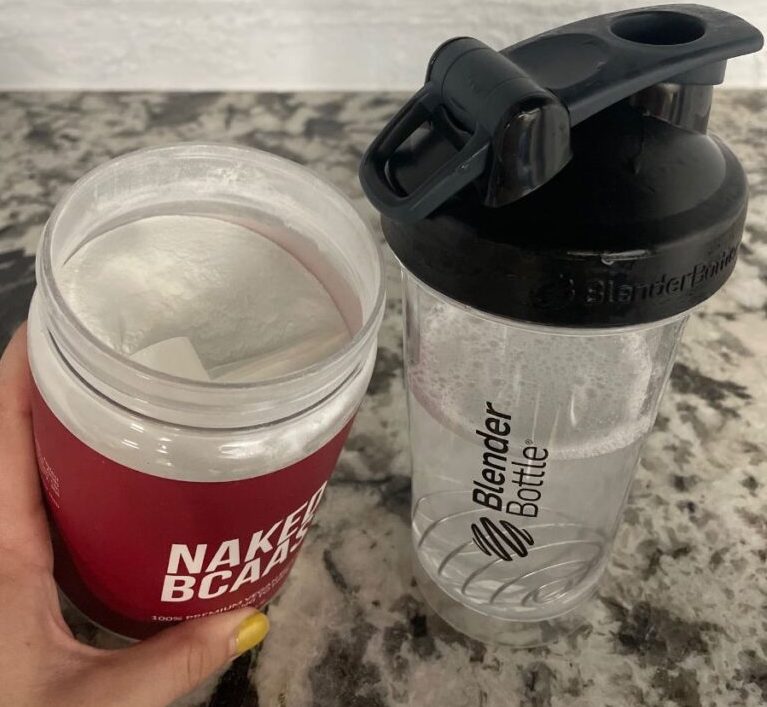
Of the nine essential amino acids, only three—L-leucine, L-isoleucine, and L-valine—are BCAAs. During my undergraduate biochemistry course, I used the handy acronym ‘LIV’ to remember the BCAAs; it hasn’t left my brain since, and I hope it’ll stick with you, too!
Collectively, the three BCAAs2 stimulate skeletal protein synthesis and suppress proteolysis3 (the breakdown of protein). BCAAs also support immune function, regulate blood sugars, and offer other whole-body benefits. However, each BCAA comes with its unique roles and advantages. Let’s check ‘em out!
Leucine
Think of L-leucine as the “muscle-building” man on campus, boasting the most anabolic effects among the BCAAs. Leucine4 primarily activates the mTOR pathway5, which controls skeletal muscle mass’ anabolic (building) and catabolic (breakdown) signaling, resulting in muscle hypertrophy and muscle wastage, respectively.
Isoleucine
Isoleucine4 might not stimulate muscle protein synthesis like leucine, but it does help increase glucose (sugar or the simplest form of carbs) uptake by muscle cells for energy. This additional fuel can enhance muscular endurance and stamina and help prevent muscle loss.
Valine
Valine might not get the attention like the other BCAAs, especially leucine. But remember, valine6 is still a branched chain and essential amino acid that aids muscle tissue recovery and repair, among its other collective benefits. Valine’s standout quality is its ability to boost energy levels and enhance endurance.
What Are the Benefits of BCAAs?
While we’ve already peppered in some of the key roles of BCAAs and covered the BCAA benefits in full, let’s recap the main takeaways:
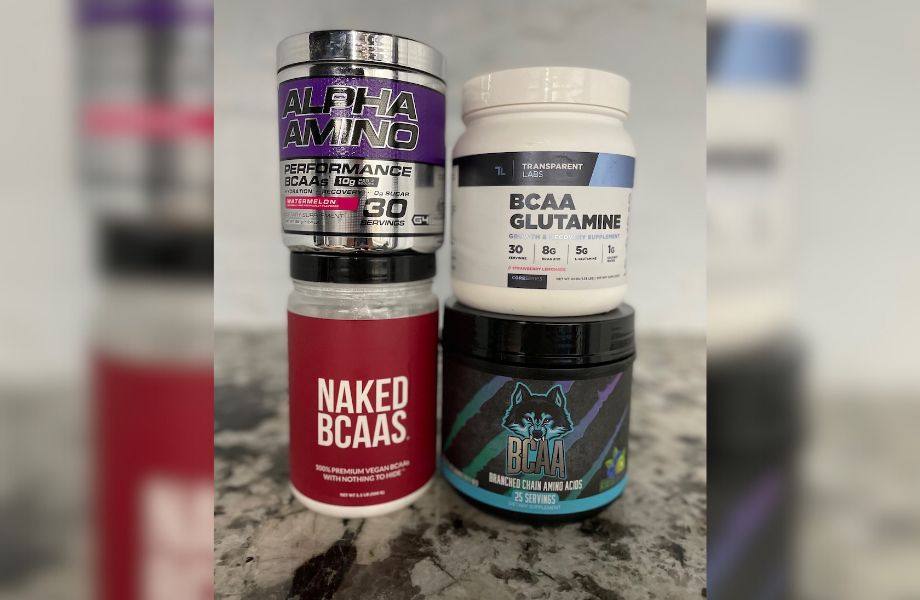
- Muscle growth: Because BCAAs play an essential role in muscle protein synthesis, supplementing with them—mainly if you fall short of dietary protein—can aid muscle growth and repair. But as a caveat, BCAA supplementation alone won’t support your muscle-building dreams without the other six EAAs.
- Athletic performance: Muscle fatigue is often the limiting factor for sustaining (or not) physical performance, and research7 suggests BCAAs may prolong time to exhaustion. This is likely due to BCAAs attenuating serotonin, a hormone and neurotransmitter responsible for fatigue during exercise.1
- Muscle recovery and soreness: According to a 2019 meta-analysis8, supplementing with BCAAs after exercise largely reduces delayed-onset muscle soreness (DOMS) compared to placebo. Another meta-analysis9 suggests BCAAs may reduce muscle damage and retain muscle strength after exercise.
- Fat loss: A small, yet notable 2016 study10 shows supplementing with BCAAs—while on a hypocaloric diet and resistance training protocol—promotes fat loss while preserving muscle mass. Other data11 supports BCAA supplementation for fat loss but, again, in the presence of a calorie deficit.
Like the benefits of protein, BCAAs aren’t just for optimizing your bodybuilding dreams and fitness endeavors. BCAAs12 also have roles in neural and immune function, blood sugar regulation, and cell proliferation, and may even offer greater insight into disease prevention13—like diabetes, cancer, and heart failure.
What Is the Best Ratio for BCAAs?
Research14 currently suggests the best BCAA ratio is 2:1:1—two parts leucine, one part isoleucine, and one part valine—with a proposed Recommended Dietary Allowance (RDA) of 45 milligrams of leucine and 22.5 milligrams of isoleucine and valine per kilogram of body weight. For someone weighing 200 pounds (90.9 kilograms), this amounts to 4 grams of leucine and 2 grams of isoleucine and valine.
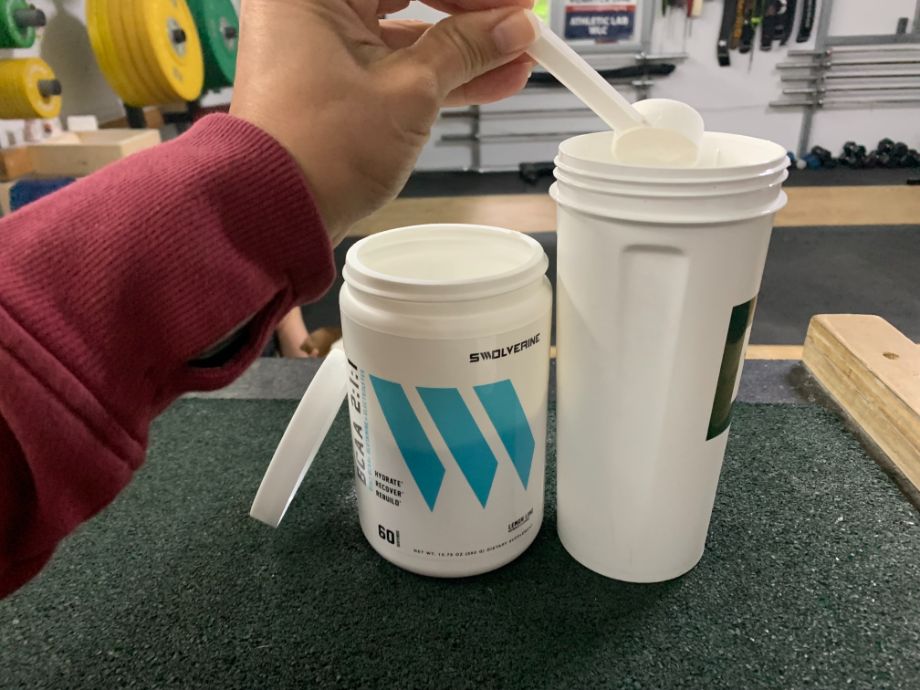
However, it’s important to note the RDA is for sedentary individuals, and exercise increases BCAA requirements15. Other BCAA ratios—like 10:1:1 and 4:1:1—are also available and explored, although 2:1:1 proves the most favorable.
But might the ratio of leucine, isoleucine, and valine alter depending on your weight loss or muscle-building goals? Let’s take a look.
Best Ratio for Weight Loss
First and foremost, no magical ratio of BCAAs will help you lose body fat without being on top of your nutrition game. Because, remember, research shows BCAAs may aid fat loss in tandem with calorie restriction.
Moreover, research16 is mixed about the impacts of BCAAs on fat loss, and there’s really no sound evidence that leads us to believe a BCAA ratio for weight loss exists beyond the overarching 2:1:1 recommendation.
At this point, leaning on the 2:1:1 ratio is likely best to promote fat loss and favorable body composition (as you’ll learn right… now!).
Best Ratio for Muscle Building
Before we look into the best ratio to build muscle, we must address how BCAAs stimulate protein synthesis in muscle tissue following resistance training. So we can hit our protein targets day in and day out, but without some form of weight training, we’ll never grow lean muscle mass and change our body composition as hoped.
Light spiel aside, we might wonder, “As the most influential BCAA for muscle growth, more leucine means more muscle, right?” Eh, hardly.
The Journal of the International Society of Sports Nutrition (JISSN)12 suggests that leucine on its own can increase protein synthesis. But as Destini Moodi, sports dietitian and the head of performance nutrition for the NBA G League Ignite, points out, “As per the research17, it seems that it is ideal to consume branched chain amino acids in a 2:1:1 ratio to optimally obtain the benefits of BCAAs.”
Moreover, a balanced intake of essential amino acids promotes the greatest protein synthesis. Consuming 6-15 grams of EAAs and about 1-3 grams of leucine per meal optimizes muscle protein synthesis.12
Bob Iafelice, registered dietitian and supplements expert, leaves us with, “A complete, high-quality protein food such as whey that furnishes all of the essential amino acid building blocks to drive muscle gains is the preferred choice for a post-workout beverage.” So, a post-workout protein shake—particularly one with all EAAs like a whey protein powder—will do the trick!
What Should You Look for In a BCAA Supplement?
When looking for the best BCAA supplement for your needs and goals, ensure it considers and checks all these boxes before you make your way to the checkout.
Formula
Most dietary supplements are straightforward, as you’d expect whey protein powder to contain whey and pre-workouts containing various ergogenic ingredients like caffeine and beta-alanine (and even preworkouts with BCAAs). But then there are branched-chain amino acid supplements with more than BCAAs, including ingredients like glutamine and electrolytes.
That said, these additives may or may not be beneficial for you based on your unique goals and lifestyle. Also, factor in dietary restrictions—like needing gluten or an allergen-free product—and avoid those with added sugars, fillers, and artificial ingredients.
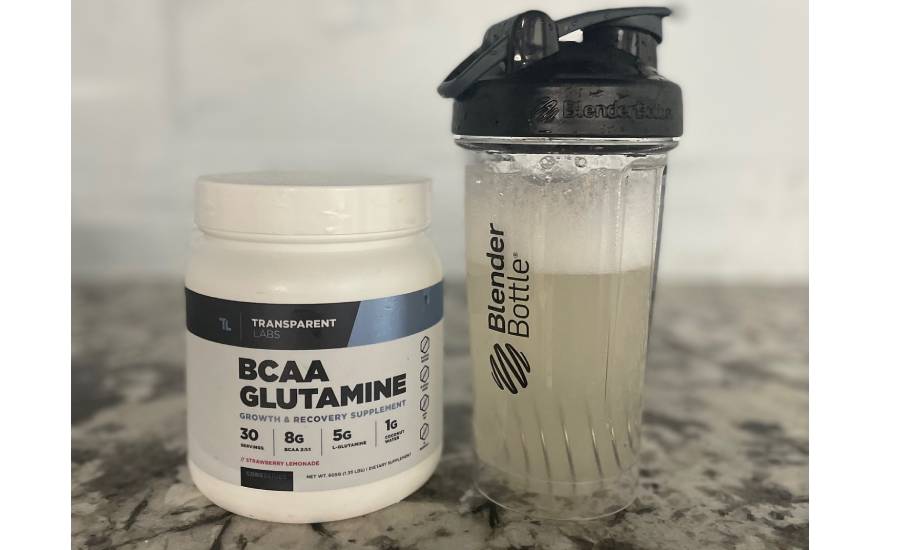
Dosage
Recall that the most optimal ratio is 2:1:1—leucine:isoleucine:valine)—and the RDA is 45 milligrams of leucine and 22.5 milligrams of isoleucine and valine per kilogram of body weight (and more if you’re active).
Most products supply you with the proper dose, often at least 5 grams of BCAAs per serving. But if you weigh more, you might need a BCAA with a larger serving, or you could simply scale the portion to match.
Form
Would you prefer to mix a BCAA powder into a drink or swallow pills? Both options are available, so consider which fits your lifestyle and preferences best.
Third-Party Testing
Because the Food and Drug Administration (FDA) does not tightly regulate dietary supplements, we always encourage consumers to look for third-party tested products—and BCAAs are no exception.
Third-party tested supplements are voluntarily tested for purity and safety, meaning the product contains what it claims to and is free of harmful ingredients that mainly act as cheap fillers. And especially if you’re an athlete, look for products with Informed Sport, NSF, or BSCG logos to ensure they’ve been batch-tested for banned substances.
Best Ratio for BCAAs: Final Thoughts
BCAAs—leucine, isoleucine, and valine—are essential amino acids, meaning they must be obtained through food sources because the body cannot produce them. Each BCAA has its distinct roles, but they’re collectively known for muscle protein synthesis, energy production, and glucose uptake, among other functions and benefits.
The most recommended ratio for BCAAs is 2:1:1, representing leucine to isoleucine to valine, especially in BCAA supplements. While some supplements emphasize leucine due to its pronounced role in stimulating muscle protein synthesis, there’s limited evidence suggesting that higher ratios lead to greater benefits.
Ultimately, ensuring adequate intake of dietary protein and essential amino acids is vital for achieving fitness goals and supporting overall health. And, as always, consulting with a healthcare professional, such as a registered dietitian, is one of the best ways to ensure you’re addressing your unique dietary needs.
Best Ratio for BCAAs: FAQs
What does 2:1:1 mean on BCAAs?
Designating “2:1:1” on a BCAA powder means there are two parts leucine to one part each of isoleucine and valine.
What is the 10:1:1 ratio for BCAAs?
The BCAA ratio of 10:1:1 suggests 10 times more leucine than isoleucine and valine.
How do I get the best results from BCAAs?
To maximize the benefits of your BCAAs, it’s essential to consume the appropriate dosage for your needs, but a 5-gram serving with a 2:1:1 ratio is an excellent starting point. Moreover, despite the back-and-forth discussions about when to take BCAAs for best results, most nutrition experts agree consuming enough protein, regardless of when you take it, is paramount.
These statements have not been evaluated by the Food and Drug Administration. This product is not intended to diagnose, treat, cure, or prevent any diseases.
References
- Holeček M. Branched-chain amino acids in health and disease: metabolism, alterations in blood plasma, and as supplements. Nutr Metab. 2018;15(1). doi:https://doi.org/10.1186/s12986-018-0271-1
- Mann G, Mora S, Madu G, et al. Branched-chain Amino Acids: Catabolism in Skeletal Muscle and Implications for Muscle and Whole-body Metabolism. Front Physiol. 2021;12:702826. Published 2021 Jul 20. doi:10.3389/fphys.2021.702826
- Bell RAV, Al-Khalaf M, Megeney LA. The beneficial role of proteolysis in skeletal muscle growth and stress adaptation. Skelet Muscle. 2016;6(1). doi:https://doi.org/10.1186/s13395-016-0086-6
- Zhang S, Zeng X, Ren M, et al. Novel metabolic and physiological functions of branched chain amino acids: a review. J Anim Sci Biotechnol. 2017;8:10. Published 2017 Jan 23. doi:10.1186/s40104-016-0139-z
- Yoon MS. mTOR as a Key Regulator in Maintaining Skeletal Muscle Mass. Front Physiol. 2017 Oct 17;8:788. doi: 10.3389/fphys.2017.00788. PMID: 29089899; PMCID: PMC5650960.
- National Center for Biotechnology Information. PubChem Compound Summary for CID 6287, Valine. https://pubchem.ncbi.nlm.nih.gov/compound/Valine.
- AbuMoh’d MF, Matalqah L, Al-Abdulla Z. Effects of Oral Branched-Chain Amino Acids (BCAAs) Intake on Muscular and Central Fatigue During an Incremental Exercise. J Hum Kinet. 2020;72:69-78. Published 2020 Mar 31. doi:10.2478/hukin-2019-0099
- Fedewa MV, Spencer SO, Williams TD, et al. Effect of branched-Chain Amino Acid Supplementation on Muscle Soreness following Exercise: A Meta-Analysis. Int J Vitam Nutr Res. 2019 Nov;89(5-6):348-356. doi: 10.1024/0300-9831/a000543. Epub 2019 Apr 2. PMID: 30938579.
- Rahimi MH, Shab-Bidar S, Mollahosseini M, et al. Branched-chain amino acid supplementation and exercise-induced muscle damage in exercise recovery: A meta-analysis of randomized clinical trials. Nutrition. 2017 Oct;42:30-36. doi: 10.1016/j.nut.2017.05.005. Epub 2017 May 18. Erratum in: Nutrition. 2017 Dec 22;: PMID: 28870476.
- Dudgeon WD, Kelley EP, Scheett TP. In a single-blind, matched group design: branched-chain amino acid supplementation and resistance training maintains lean body mass during a caloric restricted diet. J Int Soc Sports Nutr. 2016 Jan 5;13:1. doi: 10.1186/s12970-015-0112-9. PMID: 26733764; PMCID: PMC4700774.
- Novin ZS, Ghavamzadeh S, Mehdizadeh A. The Weight Loss Effects of Branched Chain Amino Acids and Vitamin B6: A Randomized Controlled Trial on Obese and Overweight Women. Int J Vitam Nutr Res. 2018 Feb;88(1-2):80-89. doi: 10.1024/0300-9831/a000511. Epub 2019 Mar 6. PMID: 30841823.
- Jäger R, Kerksick CM, Campbell BI, et al. International Society of Sports Nutrition Position Stand: protein and exercise. J Int Soc Sports Nutr. 2017 Jun 20;14:20. doi: 10.1186/s12970-017-0177-8. PMID: 28642676; PMCID: PMC5477153.
- Neinast M, Murashige D, Arany Z. Branched Chain Amino Acids. Annu Rev Physiol. 2019;81:139-164. doi:10.1146/annurev-physiol-020518-114455
- Gervasi M, Sisti D, Amatori S, et al. Effects of a commercially available branched-chain amino acid-alanine-carbohydrate-based sports supplement on perceived exertion and performance in high intensity endurance cycling tests. J Int Soc Sports Nutr. 2020 Jan 20;17(1):6. doi: 10.1186/s12970-020-0337-0. PMID: 31959202; PMCID: PMC6971972.
- Shimomura Y, Murakami T, Nakai N, et al. Exercise promotes BCAA catabolism: effects of BCAA supplementation on skeletal muscle during exercise. J Nutr. 2004 Jun;134(6 Suppl):1583S-1587S. doi: 10.1093/jn/134.6.1583S. PMID: 15173434.
- Spillane M, Emerson C, Willoughby DS. The effects of 8 weeks of heavy resistance training and branched-chain amino acid supplementation on body composition and muscle performance. Nutr Health. 2012 Oct;21(4):263-73. doi: 10.1177/0260106013510999. PMID: 24620007.
- La Bounty P, Campbell B, Oetken A, et al. The effects of oral BCAAs and leucine supplementation combined with an acute lower-body resistance exercise on mTOR and 4E-BP1 activation in humans: preliminary findings. J Int Soc Sports Nutr. 2008;5(Suppl 1):P21. Published 2008 Sep 17. doi:10.1186/1550-2783-5-S1-P21


